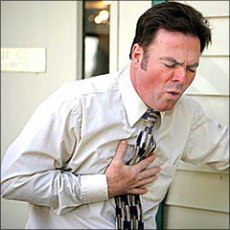 An article on Psychology Today entitled, “Do Musicians Have Different Brains?” (Link: http://www.psychologytoday.com/collections/201106/music-and-the-mind/do-musicians-have-different-brains) interested me because I have felt that the years of musical training I had in my youth shaped a huge part of how I learn. Never knowing if there was any scientific truth to my opinion, this article and subsequent studies I searched give me some insight.
An article on Psychology Today entitled, “Do Musicians Have Different Brains?” (Link: http://www.psychologytoday.com/collections/201106/music-and-the-mind/do-musicians-have-different-brains) interested me because I have felt that the years of musical training I had in my youth shaped a huge part of how I learn. Never knowing if there was any scientific truth to my opinion, this article and subsequent studies I searched give me some insight.
In the article by Susan R. Barry, Ph. D, the difference of how the auditory and visual cortexes of musician’s brains function are explored. The quote, “Anatomists would be hard put to identify the brain of a visual artists, a writer, or a mathematician – but they could recognize the brain of a musician without a moment’s hesitation” (Barry 2010), is what first hooked me about this article. Having played the piano and violin for almost a decade in my youth, I wondered what could be different about my brain? The article continues to say that developing a better musical memory through training may also enhance verbal memory, but how is this possible? Scientists found that through studies that the visual cortex was activated in verbal memory retrieval, “It is suggested that the visual cortex can be recruited to serve as extra memory resources and contributes to the superior verbal memory in special situations” (Huang 2010). The researchers chop this up to be a re-organization of the brain to recruit other areas of the brain to preform different tasks.
Throughout my life I have noticed I have a particular knack for picking up other languages relatively easily. Through learning Spanish, French, and Chinese I noticed I learned basic vocabulary in a different way than my classmates – I visualized words and phrases during recall. After reading this article it made me wonder if perhaps my musical training had a hand in this. Through further research I discovered a few more articles about memory and musical training. One study looking at perceptions and cognition abilities of the brain through musical training found that, “Musicians showed superior immediate and delayed recall of word lists and greater use of a semantic clustering strategy during initial list-learning than non-musicians… These results suggest that extensive music training is associated with a generalized enhancement of auditory and visual memory functions,” (Jakobson 2008). Perhaps musical training could be used in young children diagnosed with ADHD or other memory issues to help with the resulting issues.
Scientists are also wondering if these findings can aid in helping therapy of stroke victims or other patients with damaged portions of their brains. The thinking is that these patients can also learn to rewire their brain to perform tasks of damaged areas in undamaged areas. Music therapy has already been in use for decades for Schizophrenia and other neurological disease. Melodic Intonation Therapy, a form of musical therapy, is starting to be used in stroke victims, however. In a TedTalk by Robert Gupta, he describes the work of Dr. Gottfried Schlaug, a neuroscientist at Harvard. He says, “Schlaug found that his stroke victims who were aphasic, could not form sentences of three- or four- words, but they could sing the lyrics to a song…after 70 hours of intensive singing lessons, he found that the music was able to literally rewire the brains of his patients and create a homologous speech center in their right hemisphere to compensate for the left hemisphere’s damage” (Gupta 2012). These results are an exciting find for the future treatment and recovery of stroke victims whom have lost the abilities of speech cognition. The video of this TedTalk can be found here: http://www.ted.com/talks/robert_gupta_between_music_and_medicine.html.
Presented here are just three incidences of musical training and differences in brain function. Music, an unlikely medicine, may in the future be more widely utilized with these findings and more discoveries I am sure are to come in the future. It is important to look at other means of medicating other than a pill as to not become too dependent on synthetic therapies. This may open a window to harnessing the body’s own healing powers, as well as, giving scientists a view into how the brain functions. This could lead to a better understanding to develop more therapies and methods for dealing with neurological diseases.
Sources:
Barry, S. R. (2010). Do Musicians Have Different Brains? Eyes on the Brain. Retrieved
Lorna S. Jakobson, Samantha T. Lewycky, Andrea R. Kilgour, Brenda M. Stoesz (2008).
Music Perception: An Interdisciplinary Journal.University of California Press
Vol. 26, No. 1, pp. 41-55.
Parbery-Clark A, Strait DL, Anderson S, Hittner E, Kraus N (2011) Musical Experience
and the Aging Auditory System: Implications for Cognitive Abilities and Hearing
Speech in Noise. PLoS ONE 6(5): e18082.
Z. Huang, J.X. Zhang, Z. Yang, G. Dong, J. Wu, A.S. Chan, X. Weng, Verbal memory
retrieval engages visual cortex in musicians, Neuroscience, Volume 168, Issue 1,
16 June 2010, Pages 179-189.








